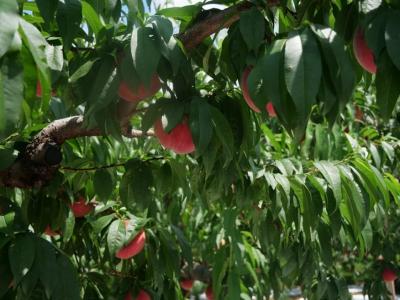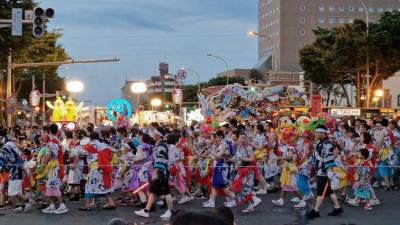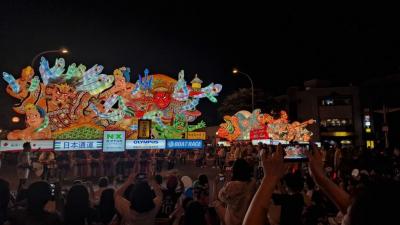

Early July, we embarked on a field trip to Mount Bandai and its captivating ponds. We started our trip by visiting the Nakano Fudoson Temple northern of Fukushima city with its beautiful location in the forest mountains, followed by a fruits picking event at a peach farm, experiencing the joy of selecting ripe, fragrant peaches. To cool off, we stopped at lake Inawashiro and enjoyed the stunning landscape.
Our main stop at the Goshiki-numa Ponds left us in awe of the five serene lakes, each painted in its unique shade of blue or green. The calm waters mirrored the surrounding trees, creating a picturesque scene that mesmerized us. Strolling along well-kept trails, we were treated to glimpses of Koi-fish gliding beneath the pristine surface.
This field trip was not just an adventure; it was an opportunity to connect with nature, learn about Fukushimas famous fruits, and appreciate the flavors of local produce.

Soma Nomaoi
End of July, we were fortunate enough to witness the Fukushima Soma Nomaoi Samurai Festival. Nestled in Fukushima Prefecture's Soma region, this annual event provides a profound glimpse into Japan's historical legacy.
With roots tracing back to the Heian period, the festival gave an interesting perspective into the regions samurai heritage. Attending the festival, we were transported back in time as participants, donned in authentic samurai attire, engaged in thrilling equestrian competitions. We also had a meet and greet with the Shogun.
The Shinki Sodatsusen, a high-speed horse race mirroring ancient cavalry training, showcased remarkable skills and horsemanship.
However, what resonated most deeply was the festival's sense of community and tradition. Witnessing participants' months-long preparation, from crafting intricate armor to embracing samurai spirit, highlighted the festival's significance in preserving heritage. It was heartening to see people from diverse backgrounds uniting to honor their roots.
The race in itself was really entertaining thus being dangerous. We saw several riders falling from their horses and one person also was severely injured.
In conclusion, my experience at the Fukushima Soma Nomaoi Samurai Festival has been a transformative journey into Japan's cultural heritage. It has deepened my appreciation for samurai history and left me with a lasting admiration for the festival's resilience, community spirit, and the unifying force of cultural traditions.
The last event I was able to attend in Japan was the Aomori Nebuta Festival, held every August in Aomori City. It is a big deal in the northern Tohoku region, and I got to experience it firsthand.
The main stars of the show are the "nebuta" floats, giant lanterns that are a true work of art. These floats are massive and incredibly detailed, often depicting legendary figures, warriors, and mythical creatures. They're made from special washi paper and bamboo frames, and when they're lit up from the inside, they come to life in a spectacular way.
As night falls, the floats start parading through the streets. Drums beat rhythmically, and everyone chants "Rassera!" in unison. What's cool is, that anyone can get involved as long as one is wearing the traditional uniform.
Of course, it's not just about the floats. The festival is a feast for the senses. The air is filled with the mouthwatering scents of festival foods, and there are traditional performances with music and dance.
This festival isn't just about art and culture; it's a celebration of Aomori's heritage and a chance for everyone to come together and have a blast. It's a memory I'll cherish forever, especially because
I was able to stay at a japanese household and celebrate with the family. 